- Clone
- 413D12 (See other available formats)
- Regulatory Status
- RUO
- Other Names
- FcRL4 (Fc receptor-like 4), IRTA1, IGFP2
- Isotype
- Mouse IgG2b, κ
- Ave. Rating
- Submit a Review
- Product Citations
- publications
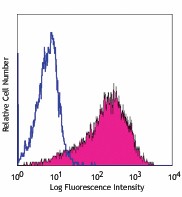
-

FcRL4 transfected P815 cells stained with 413D12 PE
| Cat # | Size | Price | Quantity Check Availability | Save | ||
|---|---|---|---|---|---|---|
| 340203 | 25 tests | 117€ | ||||
| 340204 | 100 tests | 288€ | ||||
FcRL4 (Fc receptor-like 4) is a 57 kD single pass type I transmembrane protein that exhibits 4 Ig like C2 domains. Also known as ITRA1, IGFP2, and FcRH4, FcRL4 is predominately found on a subset of memory B cells. Activation of FcRL4 contributes to B cell receptor inhibition through activation of the tyrosine kinases SHP-1 and 2. FcRL4's nascent loci is 1q23.1; however, breakpoint mutations are associated with multiple myeloma and non-Hodgkins lymphoma. Increased FcRL4 expression on memory B cells has also been observed in HIV viremic patients. FcRL4 predominately binds aggregated IgA, binds weakly with IgG3 and IgG4, and does not bind IgG1 and IgG2.
Product DetailsProduct Details
- Verified Reactivity
- Human
- Antibody Type
- Monoclonal
- Host Species
- Mouse
- Immunogen
- P815 cells transfected with FcRL4
- Formulation
- Phosphate-buffered solution, pH 7.2, containing 0.09% sodium azide and BSA (origin USA)
- Preparation
- The antibody was purified by affinity chromatography, and conjugated with PE under optimal conditions.
- Concentration
- Lot-specific (to obtain lot-specific concentration and expiration, please enter the lot number in our Certificate of Analysis online tool.)
- Storage & Handling
- The antibody solution should be stored undiluted between 2°C and 8°C, and protected from prolonged exposure to light. Do not freeze.
- Application
-
FC - Quality tested
- Recommended Usage
-
Each lot of this antibody is quality control tested by immunofluorescent staining with flow cytometric analysis. For flow cytometric staining, the suggested use of this reagent is 5 µl per million cells in 100 µl staining volume or 5 µl per 100 µl of whole blood.
- Excitation Laser
-
Blue Laser (488 nm)
Green Laser (532 nm)/Yellow-Green Laser (561 nm)
- Application Notes
-
Additional reported applications (with relevant formats) include: immunoprecipitation and blocking. mAb 413D12 is able to block the binding of FcRL4 to aggregated IgA, IgG3, and IgG4.
- Application References
-
- Sohn HW, et al. 2011. Blood. 118:6332. PubMed
- Wilson TJ, et al. 2012. J. Immunol. 188:4741. (Block)
- Product Citations
-
- RRID
-
AB_2104578 (BioLegend Cat. No. 340203)
AB_2104578 (BioLegend Cat. No. 340204)
Antigen Details
- Structure
- 57 kD, Fc receptor like, four Ig like domains
- Distribution
-
Subset of memory B cells, some multiple myeloma and non-Hodgkins lymphoma
- Interaction
- Tyrosine phophorylated FcRL4 interacts with SHP-1, SHP-2 to inhibit the B cell receptor
- Bioactivity
- B-cell receptor inhibition
- Cell Type
- B cells
- Biology Area
- Immunology
- Molecular Family
- CD Molecules, Fc Receptors
- Antigen References
-
1. Moir S, et al. 2008. J. Exp. Med. 205:1797.
2. Ehrhardt GRA, et al. 2003. P. Natl. Acad. Sci. USA 100:13489.
3. Ehrhardt GRA, et al. 2005. J. Exp. Med. 202:783.
4. Polson AG, et al. 2006. J. Int. Immunol. 18:1363. - Gene ID
- 83417 View all products for this Gene ID
- UniProt
- View information about CD307d on UniProt.org
Related Pages & Pathways
Pages
Related FAQs
- What type of PE do you use in your conjugates?
- We use R-PE in our conjugates.
Other Formats
View All CD307d Reagents Request Custom Conjugation| Description | Clone | Applications |
|---|---|---|
| PE/Cyanine7 anti-human CD307d (FcRL4) | 413D12 | FC |
| Purified anti-human CD307d (FcRL4) | 413D12 | FC,IP |
| PE anti-human CD307d (FcRL4) | 413D12 | FC |
| APC anti-human CD307d (FcRL4) | 413D12 | FC |
| PerCP/Cyanine5.5 anti-human CD307d (FcRL4) | 413D12 | FC |
| TotalSeq™-C0828 anti-human CD307d (FcRL4) | 413D12 | PG |
| TotalSeq™-B0828 anti-human CD307d (FcRL4) | 413D12 | PG |
Customers Also Purchased
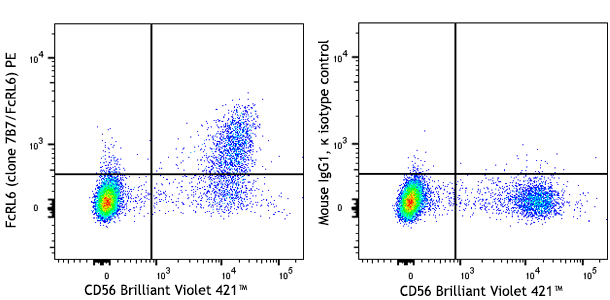
Compare Data Across All Formats
This data display is provided for general comparisons between formats.
Your actual data may vary due to variations in samples, target cells, instruments and their settings, staining conditions, and other factors.
If you need assistance with selecting the best format contact our expert technical support team.
-
PE/Cyanine7 anti-human CD307d (FcRL4)
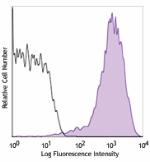
FcRL4 transfected P815 cells were stained with FcRL4 (clone ... -
Purified anti-human CD307d (FcRL4)
-
PE anti-human CD307d (FcRL4)
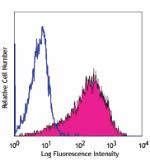
FcRL4 transfected P815 cells stained with 413D12 PE -
APC anti-human CD307d (FcRL4)
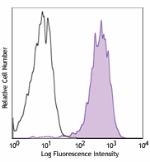
Human FcRL4 transfected P815 cells were stained with FcRL4 (... -
PerCP/Cyanine5.5 anti-human CD307d (FcRL4)
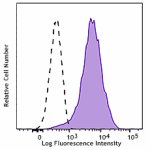
Human FcRL4 transfected P815 cells were stained with CD307d ... -
TotalSeq™-C0828 anti-human CD307d (FcRL4)
-
TotalSeq™-B0828 anti-human CD307d (FcRL4)
 Login / Register
Login / Register 










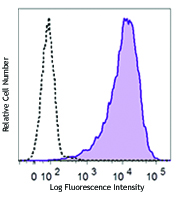
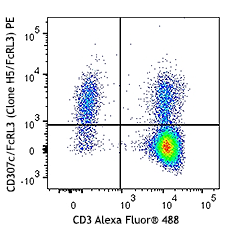
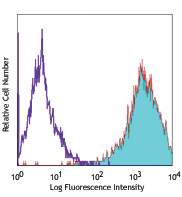



Follow Us